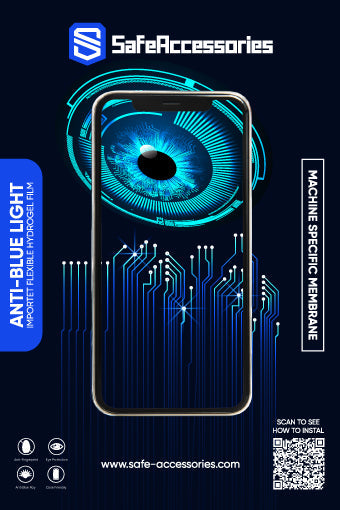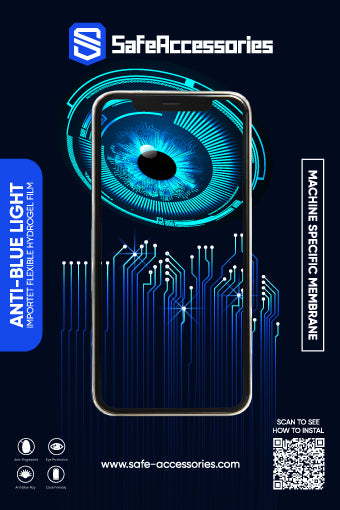Smartwatches: How They Work and Are They Safe for People?
Share
In the fast-evolving world of technology, smartwatches have emerged as powerful tools that blend fashion with functionality. These devices not only enhance our connectivity but also offer numerous health and fitness benefits. But how do smartwatches work, and are they safe for us? Let's explore these aspects in detail.
The Technology Behind Smartwatches: How Do They Work?
Smartwatches are marvels of modern technology, packed with sophisticated hardware and software. Here’s a closer look at what makes them tick:
1. Hardware Components
At the core of every smartwatch is a microprocessor, the brain of the device that processes data and commands. Accompanying this are several key components:
-
Sensors: Smartwatches are equipped with sensors like accelerometers (for step counting), gyroscopes (for detecting movement and orientation), heart rate monitors, and SpO2 sensors (for measuring blood oxygen levels).
-
Display: Most smartwatches feature high-resolution touchscreens that provide vibrant colors and sharp images.
-
Battery: A rechargeable lithium-ion battery powers the device, with varying battery life depending on usage.
-
Connectivity: Smartwatches use Bluetooth (to sync with smartphones), Wi-Fi (for internet access), and sometimes cellular connectivity (for calls and messages independently).
2. Software and Operating Systems
Smartwatches run on specialized operating systems optimized for performance and battery life. Popular OS options include:
-
watchOS: Developed by Apple for its Apple Watch, known for seamless iPhone integration.
-
Wear OS: Created by Google, used by several manufacturers, offering a customizable interface.
-
Tizen: Developed by Samsung for its Galaxy Watch series, praised for smooth performance and battery efficiency.
-
Proprietary OS: Tailored operating systems developed by manufacturers for specific smartwatch models.
3. Health and Fitness Tracking
Key health and fitness tracking features include:
-
Heart Rate Monitoring: Uses optical sensors to measure heart rate through light reflection.
-
Step Counting: Combines accelerometers and gyroscopes to track movement and steps.
-
Sleep Tracking: Analyzes sleep patterns using motion sensors and heart rate data.
-
Calorie Tracking: Estimates calorie expenditure by combining data from various sensors.
4. Communication and Notifications
Smartwatches keep you connected with features like:
-
Notifications: Display alerts from your smartphone, including messages, emails, and social media updates.
-
Calls and Messages: Some models with cellular connectivity can make and receive calls and messages independently.
-
Voice Assistants: Built-in voice assistants help perform tasks, answer questions, and control smart home devices using voice commands.
5. Apps and Customization
Smartwatches support a wide range of apps for health, productivity, entertainment, and more. Customizable watch faces, bands, and settings allow users to personalize their devices.
Are Smartwatches Safe for People?While smartwatches offer numerous benefits, it's natural to wonder about their safety. Here are some considerations:
1. Radiofrequency (RF) Radiation
Smartwatches emit low levels of RF radiation, which is much less harmful than ionizing radiation like X-rays. Regulatory bodies like the FCC and ICNIRP set international safety limits for RF radiation, and smartwatches comply with these standards.
2. Eye Strain
Constantly looking at a small screen can cause eye strain, dry eyes, and headaches. To mitigate this, take regular breaks and adjust the screen brightness.
3. Skin Irritation
Wearing a smartwatch for extended periods can cause skin irritation or allergic reactions, especially for those with sensitive skin. Regularly cleaning your smartwatch and taking it off at night can help prevent irritation.
4. Privacy Concerns
Smartwatches collect personal data, including health metrics and location information. It's important to review privacy policies to ensure data protection.
5. Battery Safety
While rare, there have been isolated incidents of smartwatch batteries overheating or causing burns. Always use official chargers and avoid exposing your smartwatch to extreme temperatures.
Conclusion
Smartwatches are powerful devices that offer a wide range of health benefits, from heart rate monitoring to sleep tracking and hydration reminders. While they emit low levels of RF radiation, adhere to privacy guidelines, and are generally safe for most people, it's important to be aware of potential risks and take appropriate precautions. Understanding how these devices work and being mindful of their usage can help you make the most of your smartwatch while ensuring your safety.


